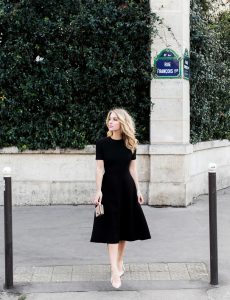Budgeting is hard. Sticking to a budget is even harder.
I know. I have been there as a starving university student trying to make ends meet and as part of a one-income household and still have enough money in the bank to pay off that student debt.
There are no magic tricks that make you a budgeting guru overnight, but there are a few ways to trick ourselves into learning how to become stricter with our spending habits without feeling like we are punishing ourselves.
A simple method is to budget with cash envelopes. I say simple here, not because it’ll make you an efficient cash envelope budgeter in a few weeks. It is simple, because it doesn’t take much to get started.
Keep in mind that all beginnings can be difficult and practice is the key to accomplishing anything successfully.
So, without further ado, let me share this simple method of taking control of your financial life.
Table of Contents
What is a Cash Envelope Budget?
A cash envelope budget is what it sounds like: a budget entirely based on a cash envelope system.
After you have decided what your budget is going to be for a list of categories that make up your spending every month, you put the money designated for that category in an envelope and write the category on the front of the envelope.
It is also a good idea to keep an extra piece of paper in each envelope to keep track of your spending, especially during the first few months when you are still getting the hang of this method.
Make a Budget
Take a look at all of your spending in one month. If you have any automatic payments coming out of your chequing account, mark them down so you don’t forget to keep the amount needed to pay those bills in your account.
Make a list of each type of expense and list the amount you spend on it per month beside it.
Then you need to decide how many different categories of expenses you have and list them accordingly. Of course for different households and different family situations, different categories are needed. For example, my list includes:
- Groceries
- Toiletries
- Public transportation
- Miscellaneous
Over the years I have noticed that I don’t need to buy new cosmetics every month. We don’t eat out for lunch very often, so this has become more of a last resort, if we have used up all left-overs from the current week or we ran out of lunch meat earlier than anticipated. And neither of us buy coffee/tea from a coffee shop on a regular basis.
So, the miscellaneous category has become our emergency eat-out lunch fund, once on a while tea break or my moisturizer has finally run out fund (this one is difficult to guess, because depending on the weather I may not more or less of it).
Using The Cash Envelope Method
Put the predetermined money in the envelopes, label the envelopes and start using them when going out to shop.
Sounds straightforward enough, but it can be difficult keeping up this new budgeting regime. Questions arise, prices increase and you have to start doing math in the store to make sure you are not going over budget.
Fear not, my budgeting grasshopper, I’m here to help.
Shared Budgeting
Let’s say you are sharing expenses with your spouse. Sometimes you go grocery shopping, sometimes your significant other takes on the task. It can be an organizing nightmare remembering who has what envelope in their wallet/purse and all of a sudden you are standing at the grocery checkout without any cash and facing the dilemma of having to use your emergency credit card.
If you know that you will be splitting the weekly trips to the grocery, have two groceries envelopes. Put an equal amount of money into each, if you know both of you end up getting half the week’s groceries. Or adjust to reflect the items each will pick up.
Increasing Prices
Inflation, market demand and the store’s own decision can all drive up the prices of groceries or other items you buy on a regular basis.
Keep an eye out for price increases and understand that adjustments over time have to be made.
A New Way to Shop
We have become so used to going into a store, picking out what we like or think we need and just tap our debit or credit card and deal with the bill later.
This is a good way to always overspend or always have an outstanding balance on our credit cards. Plastic has made it so easy for us to shop blindly, without a real consideration about price tags or immediate consequences.
We need to nip that habit in the butt and start shopping more conscientiously again or for the first time.
I know the idea of looking at every price tag and calculating how much of each item, if at all, you can afford puts a real damper on the already tedious chore of grocery shopping or takes the fun out of a shopping spree.
It can be a reality check, but if you want/need to live frugally tough decisions have to be made and even tougher actions have to be accomplished.
So, take out that cell phone of yours, open your calculator app and start crunching some numbers. You will see, the rewards of sticking to your budget will speak for themselves.
Time your Budget Accordingly
Most financial articles you read on budgeting will tell you that a budget should start at the beginning of every month.
That would be wonderful, but what if you don’t have any money in the account on the first of every month?
Unfortunately, the timing of your paychecks can add another challenge to your budgeting adventure and needs to be dealt with accordingly.
Our paychecks arrive in the bank account every other Thursday. Therefore, instead of making a budget based on the first of every month, we start it on the first Thursday of every month, making sure that enough money is in the account for rent, which is always due on the first.
This will take some time getting used to, because we are so conditioned to think only the beginning of a new month is an appropriate time to start budgeting.
Most of us also get paid biweekly. I have heard many people complain about the biweekly approach the companies use to pay their employees, but think of it this way: it’s a halfpoint chance to check up on your finances to make sure you are on track with your budget, your spending and your expectations of both.
A Few More Tips
If you notice you are running low on cash in one of your envelopes and you are carrying more than one with you, you can take a bit of money out of another envelope to cover the cost of what you are buying.
I wouldn’t necessarily suggest this approach, if you have a designated envelope for your pocket money and you have spent it all.
If, however, the cost of produce has skyrocketed or the price of meat has increased, then it’s fine to take the money to cover the cost. Just make sure you make a note and adjust the budget accordingly.
Leave Cards at Home
To avoid temptation, leave the plastic at home. Sometimes we just can’t resist and act against our better judgement. It happens, we are all human.
Also, let’s say you have finished all your shopping. You have done very well, left your cards at home, so extra purchases can be made and your blood sugar levels are dropping or you got very dehydrated. And there is no money left in the envelope you took with you on this shopping trip.
I always keep enough loose change in my purse to cover the cost of a chocolate bar, a bottle of water or bus fare, just in case.
What about that loose change?
I remember when I was a teenager going to the mall and ending up with a purse full of change. I would stand outside the shop, counting how much money I had left in my jingling wallet to see if I had enough to afford to buy anything. Sound familiar?
With our plastic we have forgotten those bygone days until now. So, what to do with all that change?
Put it in a jar, old cookie tin, fish bowl (without live fish in it, of course) and save it. You’ll be surprised how quickly your change will add up to a considerable amount that you can bring to your bank to deposit in your savings account.
Left Over in Your Envelopes
You have made it through the month and still have some money left over, so what now?
Carry it over into the next month. Use it as extra pocket money. Start another jar to save up for a special date night or that new laptop you really want.
The possibilities are endless and it shows that you are doing well adjusting to the cash envelope budgeting method.
Final Thoughts
Using the cash envelope budgeting method can be a little like thinking outside the box. A very comfortable and convenient box. It takes some getting used to, some creativity and some patience. But once you get the hang of it, it’ll be a very rewarding feeling when you realize you can make it work within your budget.
Follow the steps and instructions I listed above, make some adjustments along the way and do not despair. Nothing was ever created overnight and you are basically retraining yourself to handle your financial matters in ways you have (probably) never done before. It takes practice, but you got this.
Save it to Pinterest!




Leave a Reply